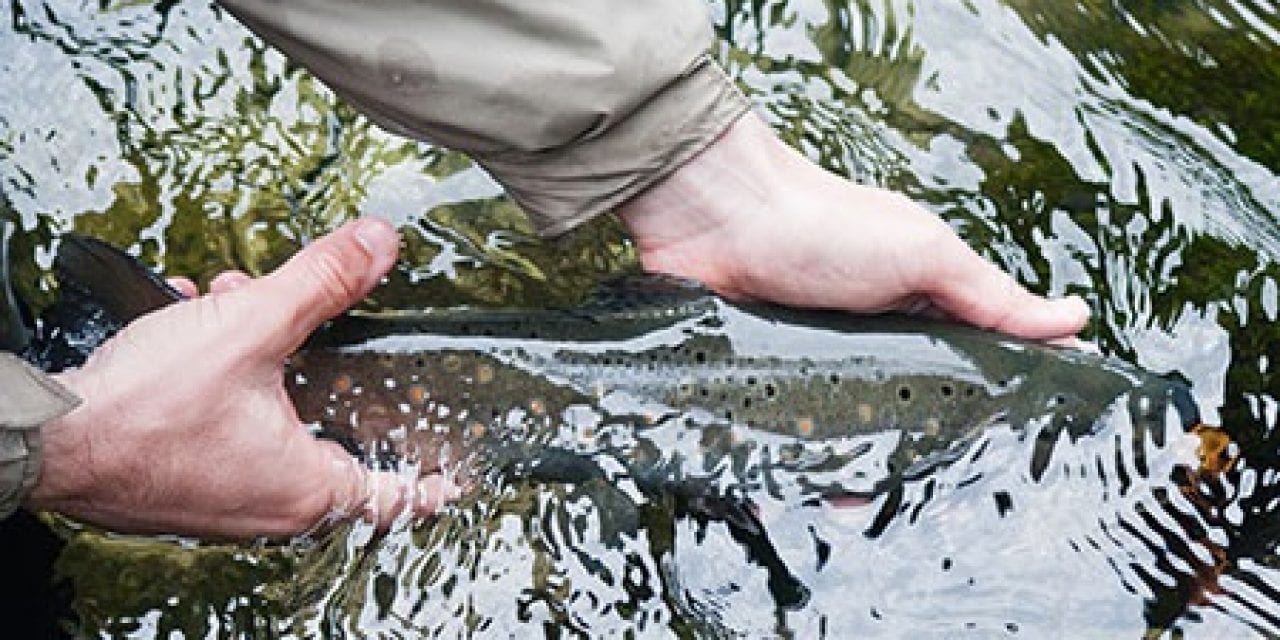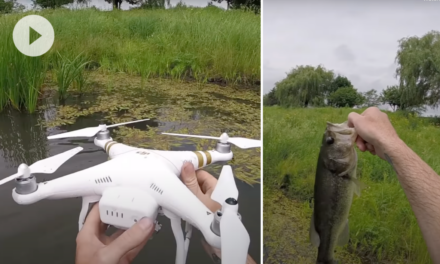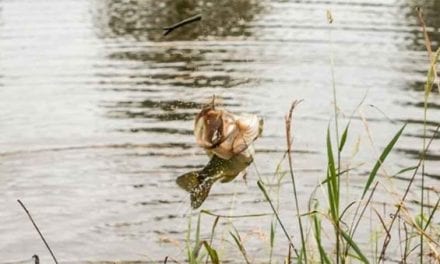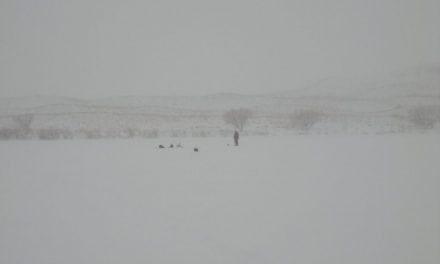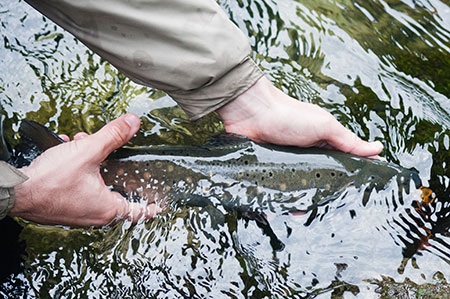 Lake trout – Many lakes near the Canadian border in northeastern Minnesota contain native lake trout. They average one to three pounds, but lakers topping 25 pounds are landed each year, so a trophy is always a possibility.
Lake trout – Many lakes near the Canadian border in northeastern Minnesota contain native lake trout. They average one to three pounds, but lakers topping 25 pounds are landed each year, so a trophy is always a possibility.
Spring
After ice-out, lake trout roam the shoreline shallows and reefs, where they remain until water temperatures warm in early summer. Lake trout like bait. Use medium-weight spinning gear to bottom-fish with dead ciscos or suspend live minnows beneath a float. Troll with spinners tipped with minnows. Cast or troll with white bucktail jigs, crankbaits, or flashy spoons. Focus your efforts in depths shallower than 30 feet. Lake trout are often most active at dawn or dusk.
Summer
Warming water sends lake trout to the cool depths. Look for them in depths greater than 40 feet. Troll with downriggers, wire line, or bottom bouncers, using crankbaits or spoons. Try vertical jigging with spoons or jigs tipped with minnows or cut bait.
September
Spawning urges bring lake trout back to the shallows when water cools. Cast or troll near reefs and rocky shorelines.
Winter
Lake trout are active all winter. Fish on the bottom with dead ciscoes or live minnows. Jig with ice-fishing jigs or spoons. Start in depths from 15 to 40 feet. Keep moving until you catch fish.
Best bet
Minnesota’s top native lake trout fisheries are in the Boundary Waters Canoe Area Wilderness. The best time to catch them is in May or during the winter season.
Rainbow trout – Rainbow trout are commonly stocked in designated stream trout lakes. They average 10 to 14 inches, but larger fish are possible in lightly fished waters.
Spring
Rainbow trout may frequent the shallows in the spring. Inflate a nightcrawler with air and cast it out from shore, using a slip sinker for weight. Or troll with cowbells trailed by a nightcrawler.
Summer
Rainbow trout are most active in June and July, when they feed on insects. Fly-fish with dry flies or nymphs. Cast or troll with small crankbaits, spinners, or spoons. The best fishing is in the evening.
September and October
Few anglers pursue rainbows in the fall, but good fishing is possible. Bottom-fish with an inflated nightcrawler. Cast or troll with small lures or flies along shorelines.
Winter
Rainbow trout often swim just below the ice. Use light lines to fish with small jigs tipped with waxworms or preserved minnows. Start just beneath the ice and go deeper until you have strikes.
Best bet
Rainbows are a great “starter fish” for trout fishing novices. Your best chance of catching one is in June by fishing from shore with inflated nightcrawlers.
Brook trout and splake – Fine-tasting brook trout and splake (a hybrid of lake trout and brook trout) are stocked in small, northern lakes. Fish measuring 12 to 16 inches are possible. Larger fish exist in some remote lakes.
Spring
Look for brook trout and splake near points and shoreline shallows. Troll near shore with spinners tipped with worms. Cast or troll with dark-colored nymphs or Wooly Buggers.
Summer
Brook trout fishing is excellent in June and early July, but splake seem to disappear after Memorial Day. Use wet flies and dry flies to catch summer brookies. You’ll often find them near submerged boulders.
September and October
Brook trout and splake are fall spawners, but they cannot successfully spawn in most lakes because they need streams for spawning. Troll or cast for them as they congregate near points.
Winter
The best ice-fishing for brook trout and splake is just after winter fishing season opens in January. Fish in depths of less than 10 feet for brook trout, splake may go deeper. Tiny ice-fishing jigs tipped with bait are effective.
Best bet
Turnip, Thrush, and Boys lakes north of Grand Marais are managed with special regulations for trophy brook trout. If you’ve always wanted to catch a big brookies, these are your best bet. The best fly-fishing is in June.
Brown trout – Brown trout are stocked in a few lakes. These elusive trout may grow to large sizes, giving skilled (or lucky) anglers the opportunity to catch a trophy.
Spring
Look for brown trout close to shore or near inlet streams. Cast from shore with inflated nightcrawlers. Troll with bright spoons or crankbaits.
Summer
Brown trout are most active at dusk. Fly-fish with large dry flies or streamers. Cast or troll with crankbaits or spinners.
September and October
Brown trout are fall spawners. They roam the shorelines in September and October. Cast with large streamers, crankbaits, or spinners.
Winter
Few anglers target winter brown trout. You can catch them using jigs tipped with preserved minnows.
Best bet
The key to catching big browns is to fish at night and use big lures. Try casting mouse imitations or floating crankbaits in likely areas after sunset.
For more information about fishing for trout in Minnesota lakes, look for Fly Fishing Minnesota’s Trout Lakes, available in bookstores or from The Highweather Press, Fly Fishing the North Country, available in bookstores or from Pfeifer Hamilton Publishing (800) 247-6789, and Trout, by the Hunting and Fishing Library, available in bookstores.
Related articles:
- September Trout fishing and Goose Hunting in the North Country; Almost
- TANEYCOMO’S WINTER TROUT FISHING ACTION
- TROUT FISHING IN KANSAS
The post Trout Fishing Tips From Minnesota appeared first on OutDoors Unlimited Media and Magazine.

